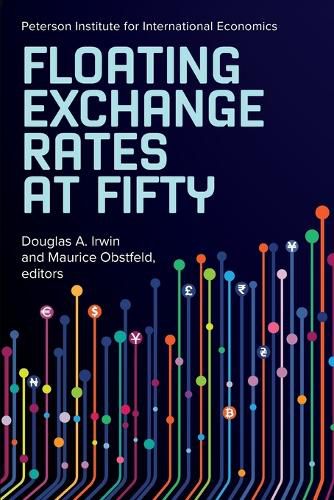Readings Newsletter
Become a Readings Member to make your shopping experience even easier.
Sign in or sign up for free!
You’re not far away from qualifying for FREE standard shipping within Australia
You’ve qualified for FREE standard shipping within Australia
The cart is loading…






Fifty years ago, in March 1973, the major industrial economies abandoned fixed exchange rates, conclusively ending the post-World War II Bretton Woods arrangements. Proponents believed their action would strengthen countries' ability to reconcile domestic macroeconomic policies with the balance of payments. But opponents feared it would initiate a new era of instability and financial shocks. Since 1973, much of the world has moved away from fixed exchange rates to a variety of regimes based on considerable exchange rate flexibility. But international trade conflicts and unstable capital flows, along with a rise in financial crises around the world, have nonetheless accompanied the global shift away from exchange rate pegs.
How has the international monetary system performed over the past half century? What have we learned from the experience of more flexible exchange rates? What has been the impact on macroeconomic and financial stability in the years since? This book derives from papers delivered at a conference that brought together leading economists and policymakers to debate and discuss these questions, as well as to assess the evolution of the international monetary system, the dominance of the US dollar, and the role of exchange rate regimes in shaping the world economy.
$9.00 standard shipping within Australia
FREE standard shipping within Australia for orders over $100.00
Express & International shipping calculated at checkout
Fifty years ago, in March 1973, the major industrial economies abandoned fixed exchange rates, conclusively ending the post-World War II Bretton Woods arrangements. Proponents believed their action would strengthen countries' ability to reconcile domestic macroeconomic policies with the balance of payments. But opponents feared it would initiate a new era of instability and financial shocks. Since 1973, much of the world has moved away from fixed exchange rates to a variety of regimes based on considerable exchange rate flexibility. But international trade conflicts and unstable capital flows, along with a rise in financial crises around the world, have nonetheless accompanied the global shift away from exchange rate pegs.
How has the international monetary system performed over the past half century? What have we learned from the experience of more flexible exchange rates? What has been the impact on macroeconomic and financial stability in the years since? This book derives from papers delivered at a conference that brought together leading economists and policymakers to debate and discuss these questions, as well as to assess the evolution of the international monetary system, the dominance of the US dollar, and the role of exchange rate regimes in shaping the world economy.